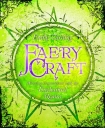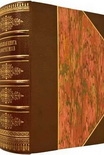Faery Craft: Weaving Connections with the Enchanted Realm Carding, Emily (first color ebook reader txt) 📖

Book online «Faery Craft: Weaving Connections with the Enchanted Realm Carding, Emily (first color ebook reader txt) 📖». Author Carding, Emily
For more information, visit www.thedolmen.com.
Elizabeth-Jane Baldry
Elizabeth-Jane Baldry is an extraordinary woman with many strings to her bow…or, indeed, her harp. Not only is she a talented classical harpist, but she also runs her own filmmaking company, Chagford Filmmaking Group, in which she produces, directs, writes, composes, and performs the score, and even edits the footage! Her work has taken her to events all over the world. We had a good long talk about her sources of inspiration and how she got to where she is today.
Elizabeth-Jane Baldry and her harp, Oberon
Which came first for you, was it the love of music or the love of Faery?
I loved fairies right from as soon as I was born; I spent hours looking for them when I was a little girl! But I loved harp as well, and the two were completely, in my mind, connected.
How do you feel your harp playing connects to the land of Faery? Does it work on a personal level or does it affect others as well?
I think that the harp is particularly subtle as an instrument of Faery; the very sound of it seems to thin the veil between the worlds. It’s fascinating that in cultures around the world the harp has always been associated with the otherworld. For example, the royal harpist in Mesopotamia would actually be buried with the monarch—he’d be buried alive. In the Celtic lands, the chief would be buried with a harp at their feet, because it was considered a bridge between man and the supernatural. The tension of the strings symbolized the tension that we have as humans between our spirit and earthly lives. A few years back I did a course with a musical archaeologist at Cambridge University, and he said this was true. He had dug up many harpists’ graves, Anglo-Saxons, and the chieftains did have the harps at their feet, but what I learned from him was that the harpists themselves would be buried with the harp in their arms. We did reconstructions of Anglo-Saxon poetry with reconstructions of these harps with strings of plaited horse hair, a very similar sound to the gut strings of today.
Was your first experience of Faery directly connected to music?
That’s an interesting question! I remember as a child just lying in the grass and that feeling of absolute oneness with nature. The hours would just pass by; I spent a lot of time outside as a child. We did have a little house at the end of the garden that my dad said the fairies lived in, that he made. It was really lovely, it had mosaics in it. I was very lucky, my parents were imaginative and supportive. We had lots of books; I could read very early, from the age of about three or four. I had this huge great big book called The Staircase of Stories and I loved it so much, it was all fairy stories. I used to take it to bed with me instead of teddies. It was a bit worse for wear after a few years of that! We moved house when I was five years old and sadly the book got lost in the move, and I was devastated. I told this story to my friend Ari Berk, and he found a vintage copy for me! I remembered so many of the stories even though I hadn’t seen the book since I was five. It didn’t seem quite so giant though!
So Faery was always with you, and the music came later as a natural extension of that?
I started piano very early, at about five or six, but piano never did it for me—I wanted to play the harp. Finally, when I was fourteen, I started learning the harp. The sound was completely magical to me, it just transported me. There’s so many harps in fairy tales. Think of “Jack and the Beanstalk,” the talking harp who actually reveals the crime—it’s quite scary, the harp cries out! I loved that.
When you’re writing music, where do you feel your inspiration is coming from?
Usually, with the concert works, I just sit in a quite space and it comes. With the film music, I look at the pictures and it comes, it does just come. It pops into my head quite easily!
Do you have a muse or ally that you consciously work with?
I would say that in my inner world I have got quite a lot of imaginative friends, if you like, that I sometimes meet in dreams or meditation.
You mentioned your film work. When did you first have the idea to produce these films?
It happened by accident because my kids were bored in the holidays. There was nothing to do, so I said, well, let’s make a movie! I went over to the bookshelves—obviously it had to be a fairy film, because I love fairies and fairy tales. I pulled out the Grimm’s fairy stories and it fell open on “Three Little Men in a Wood,” which we adapted and made the first film, which we called Woodwose—made it much more wild, it’s a fun little film. Enormously good fun, I just loved it! I did everything on that film: I wrote it, made the costumes, worked the camera, did the cinematography, everything.
On the strength of that I got the bursary to make a second film, and I made a lovely little charming British fairy tale called Pottle o’ Brains about this wise woman and this fool. He goes to the wise woman to see if he can get some brains. It’s a lovely, sweet little fairy tale. After that, I established the Chagford Filmmaking Group as a nonprofit community group to bring people together, and we specialized in British fairy tales because they’re so rooted in the landscape we love so much.
There’s no profit involved in all this work that you do on the films, so what drives you—why do you feel it’s important?
It’s incredibly important





Comments (0)